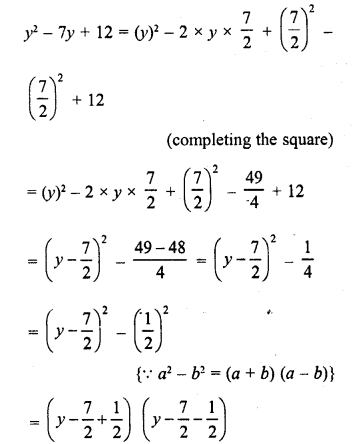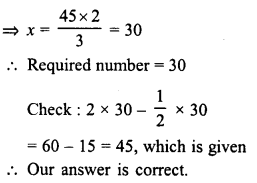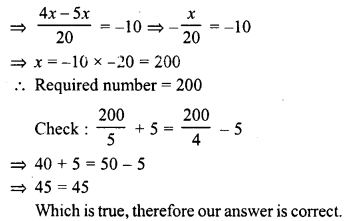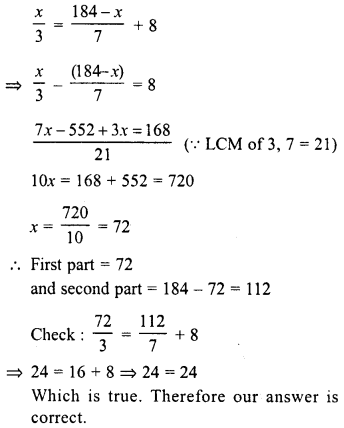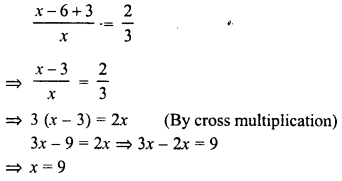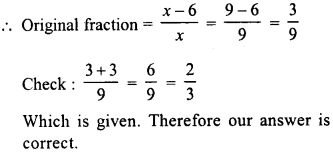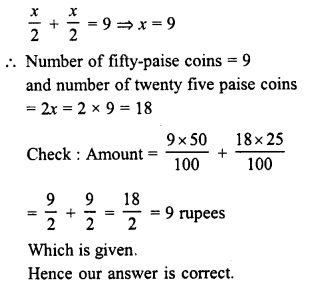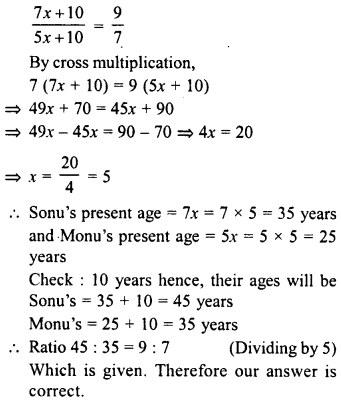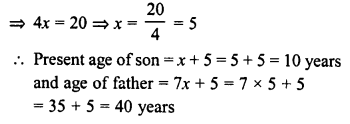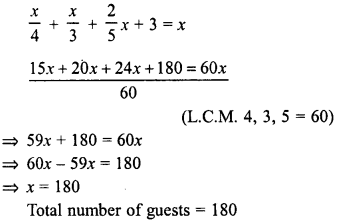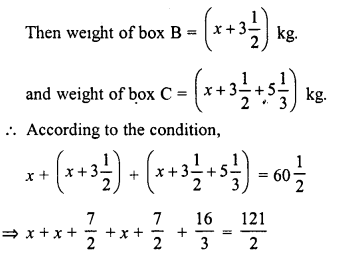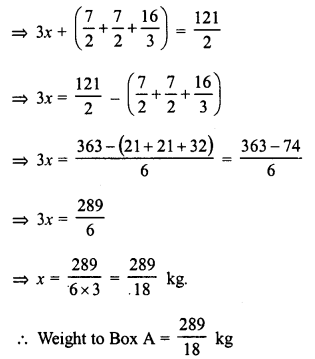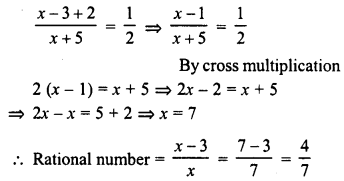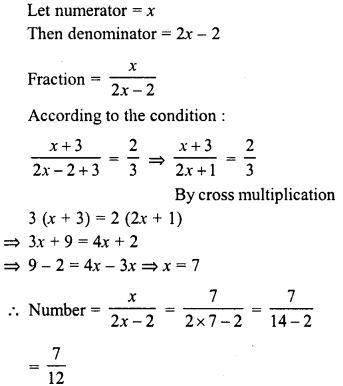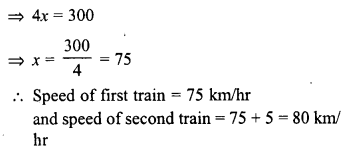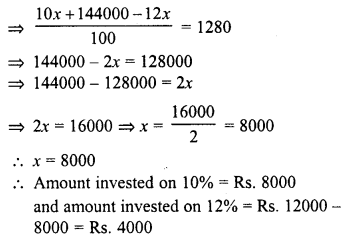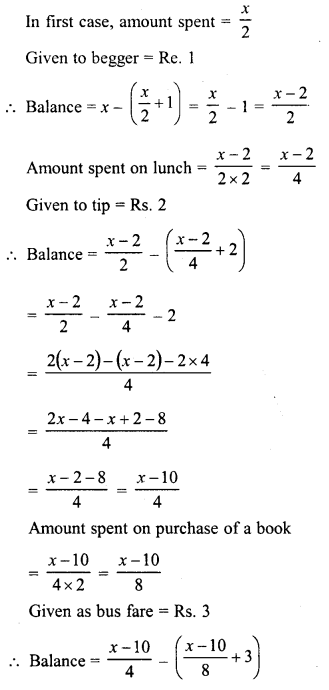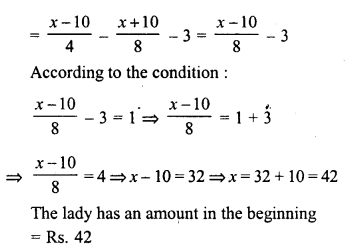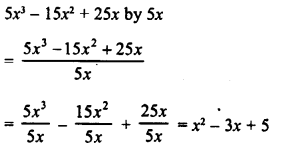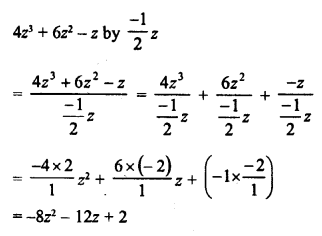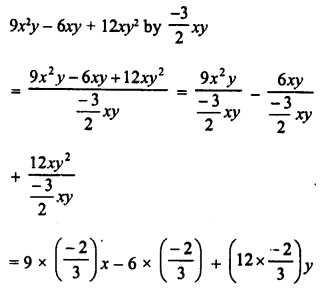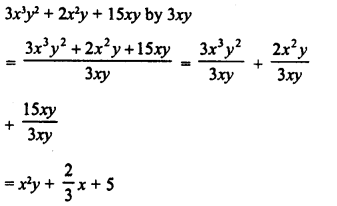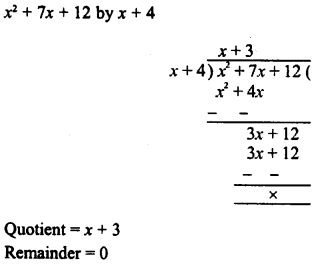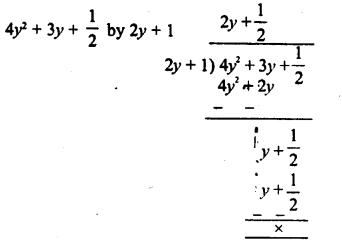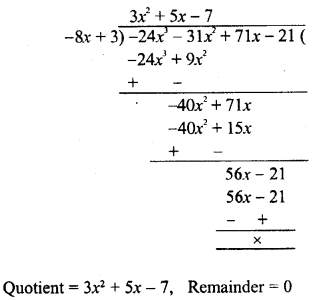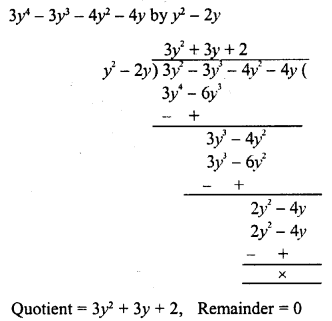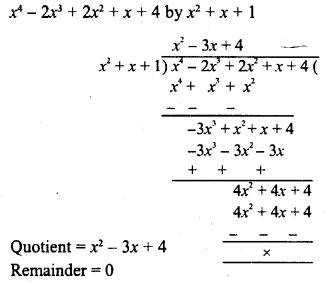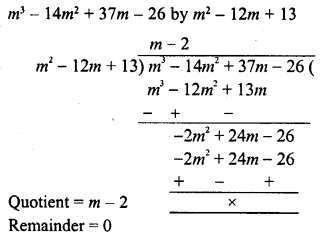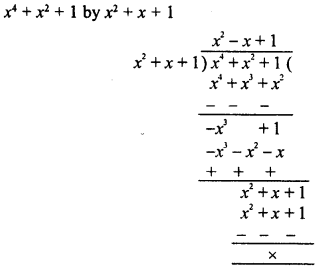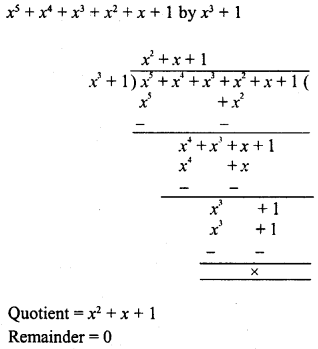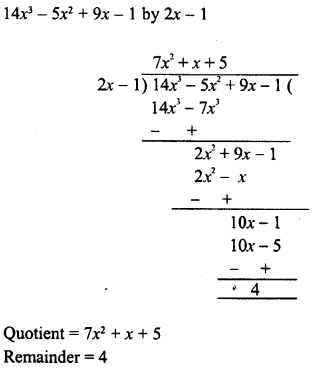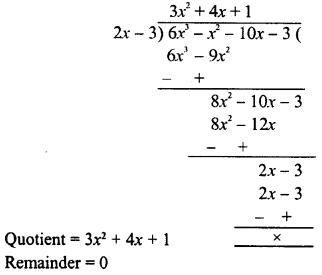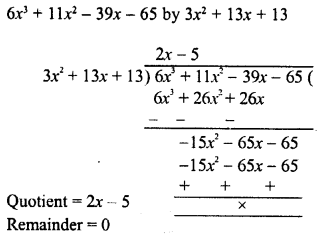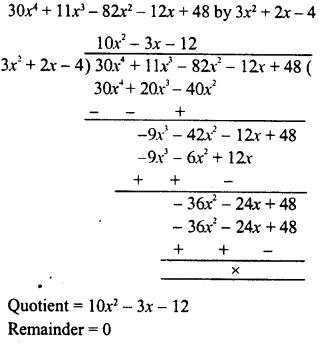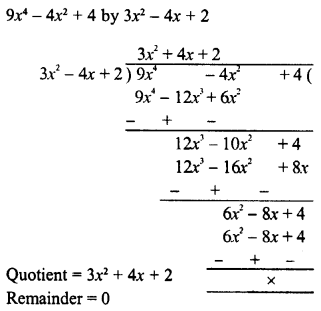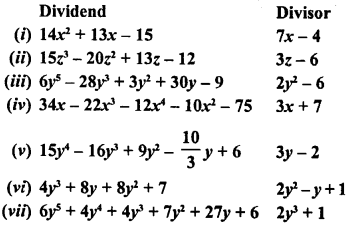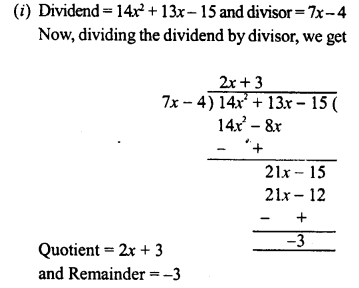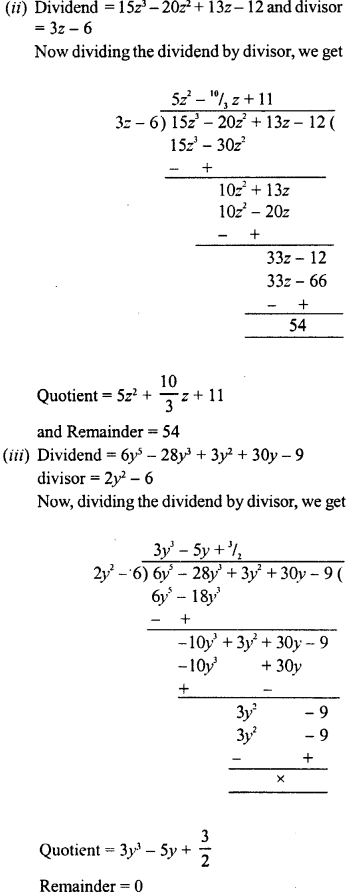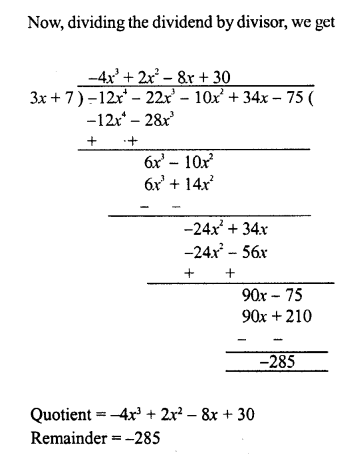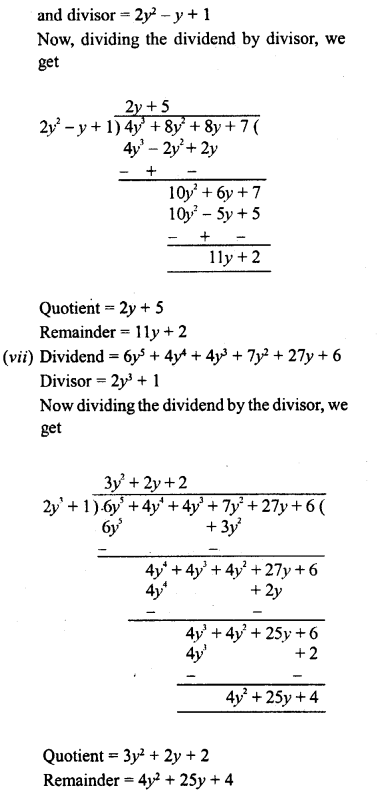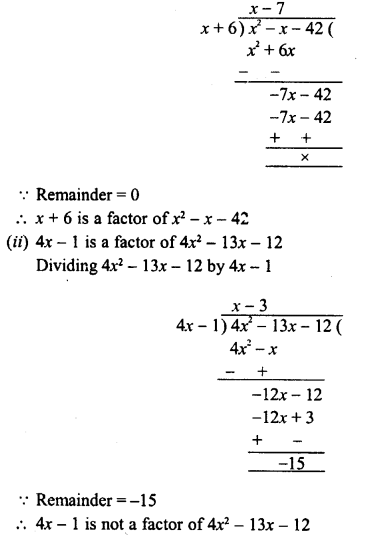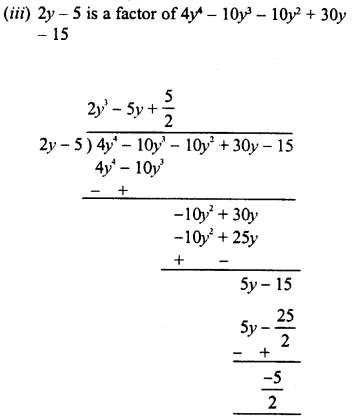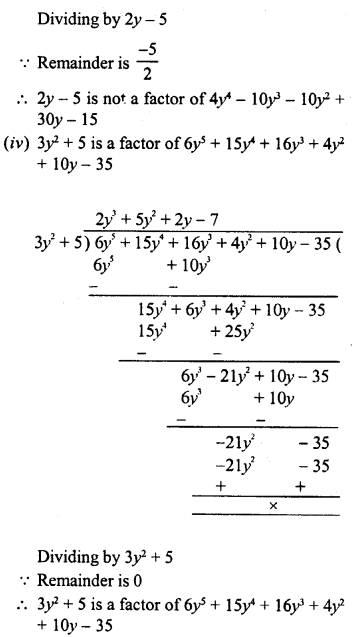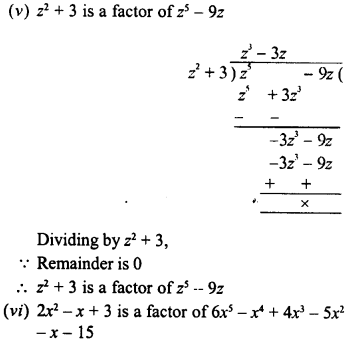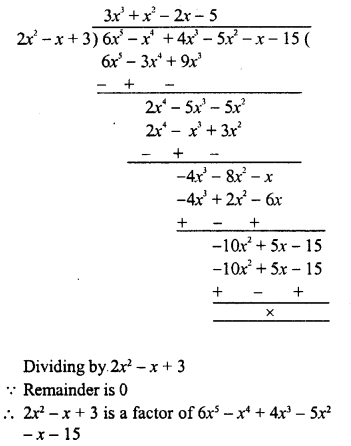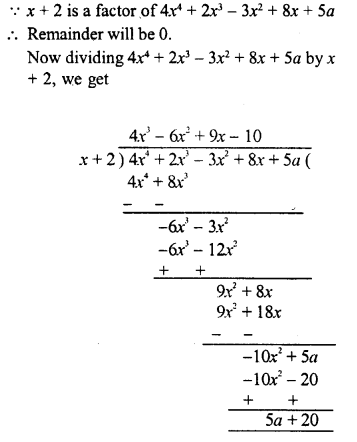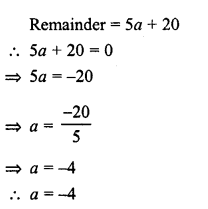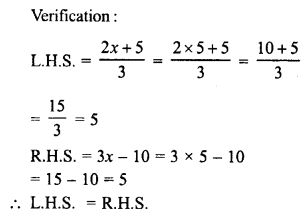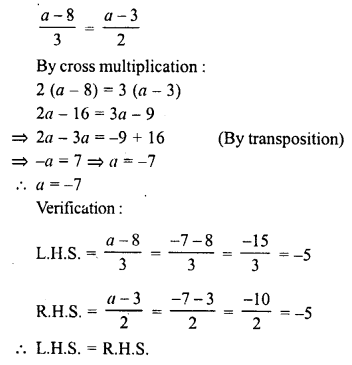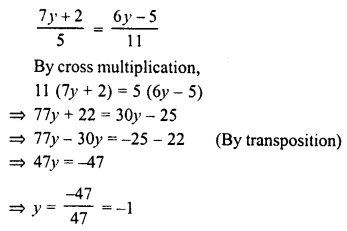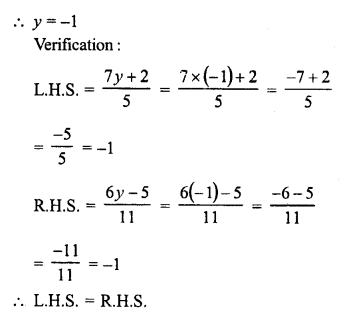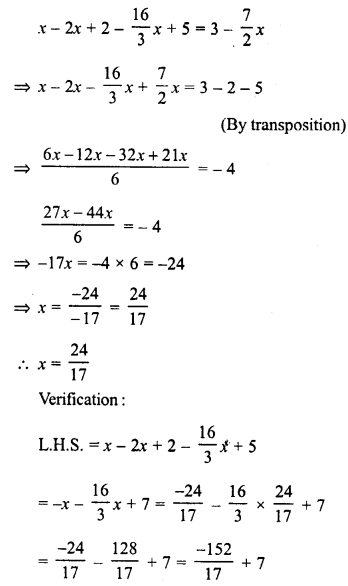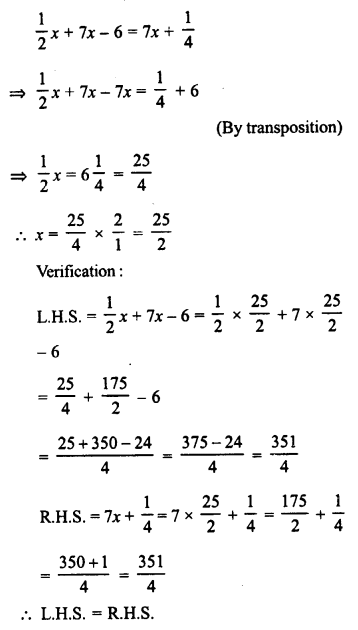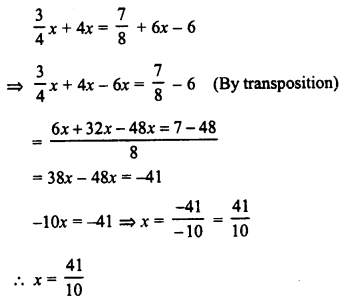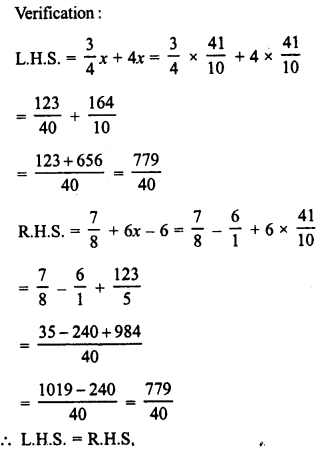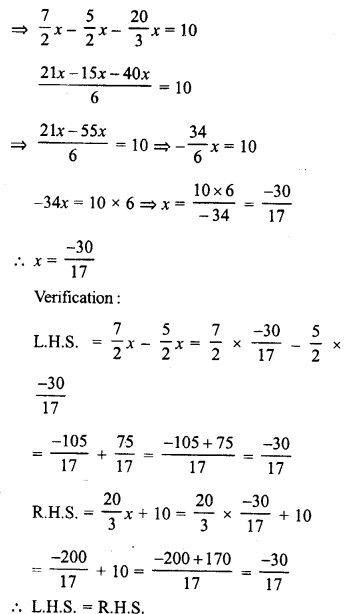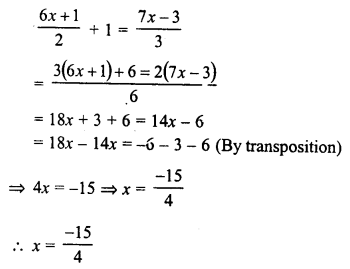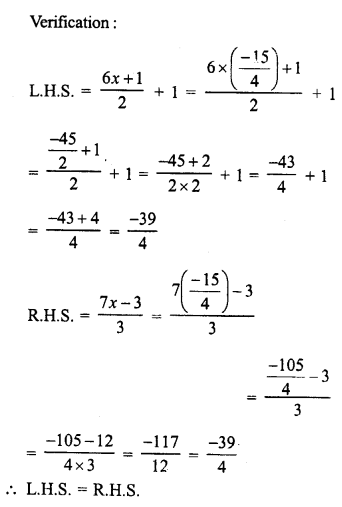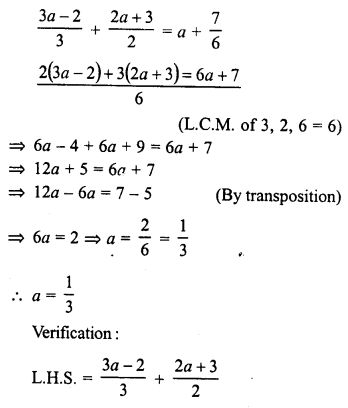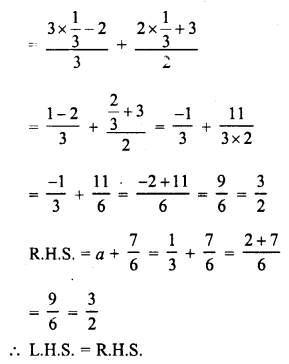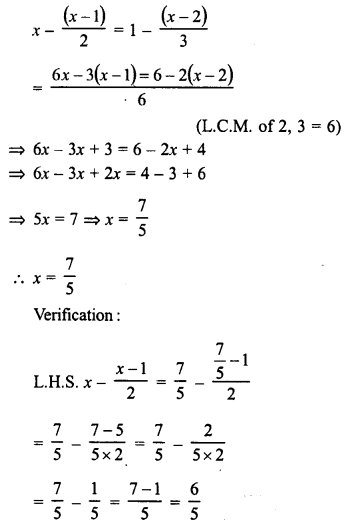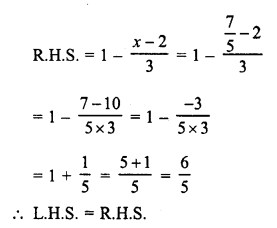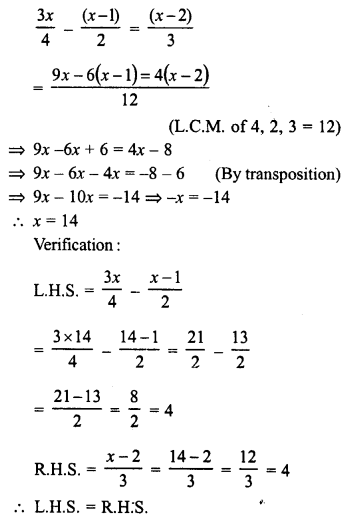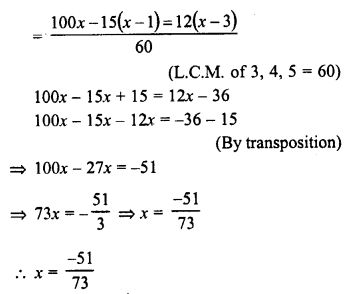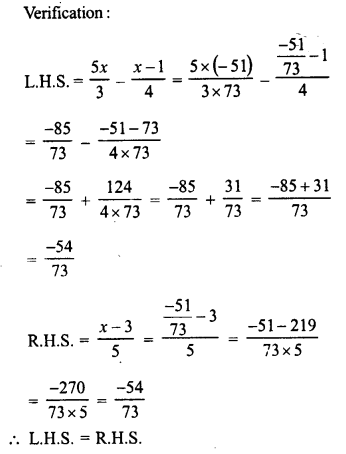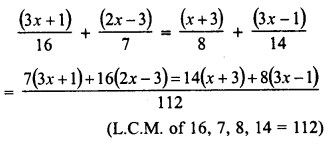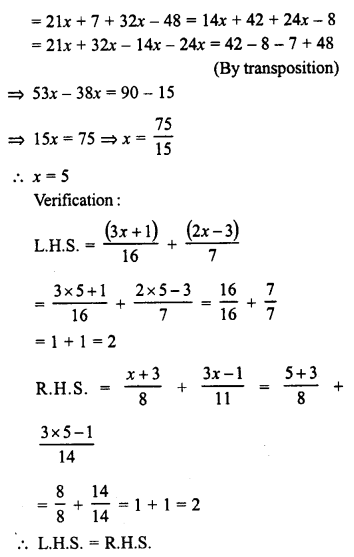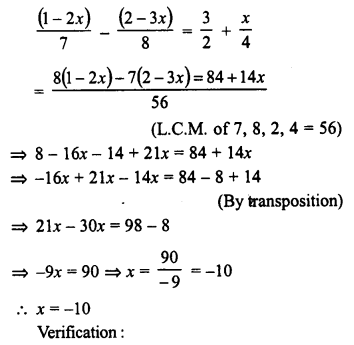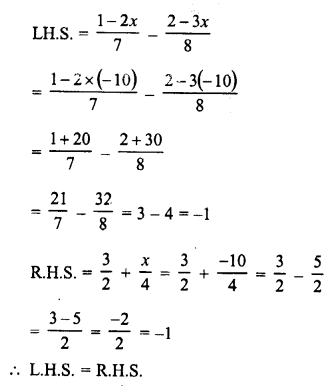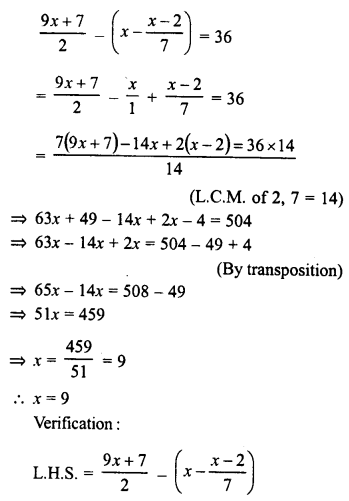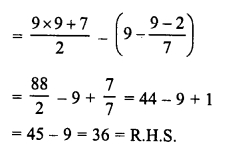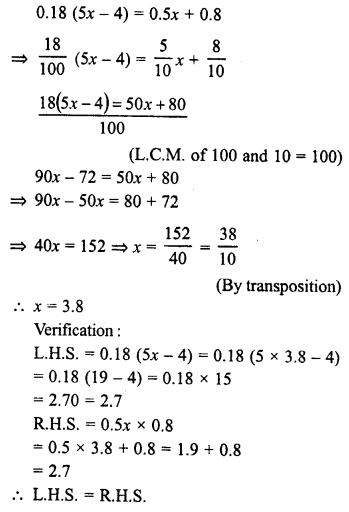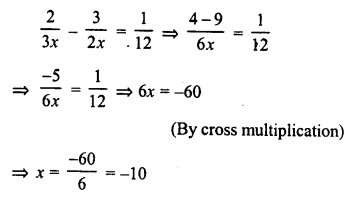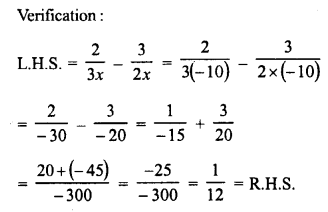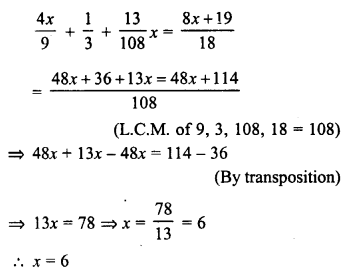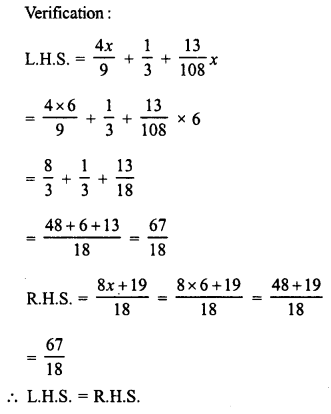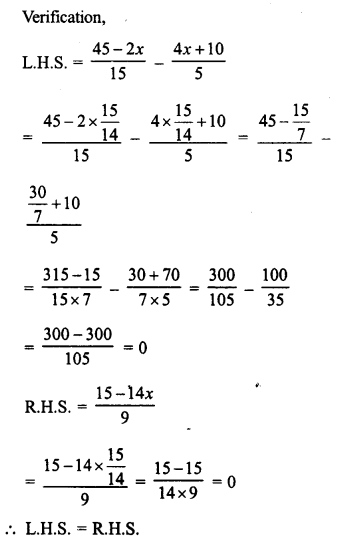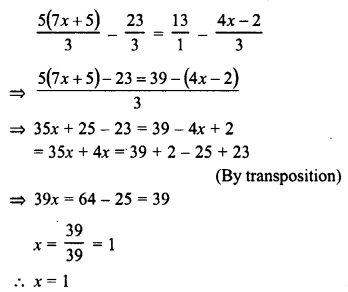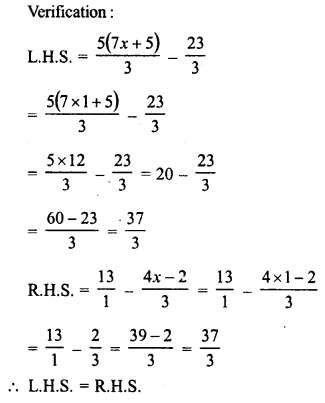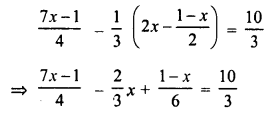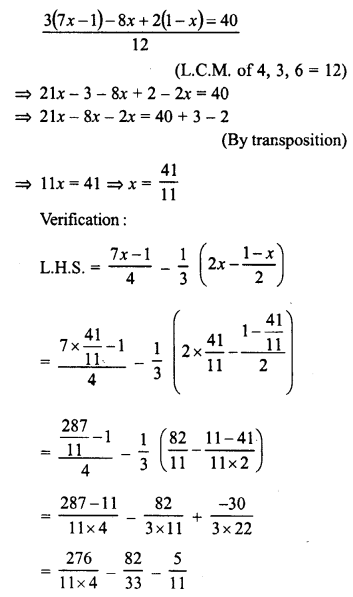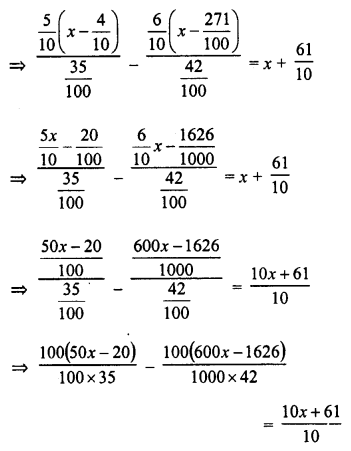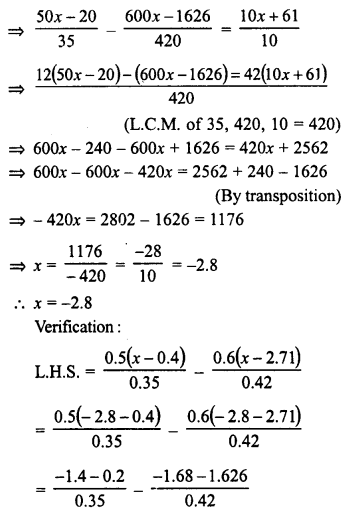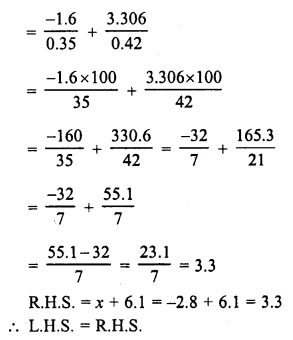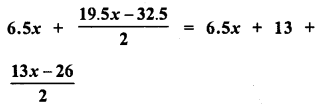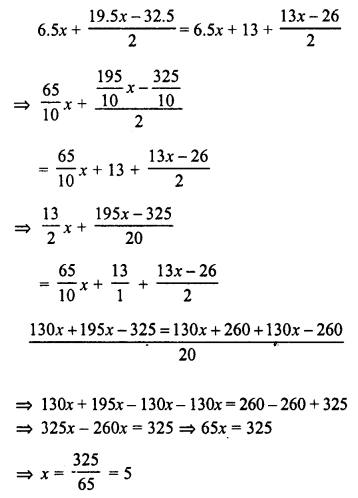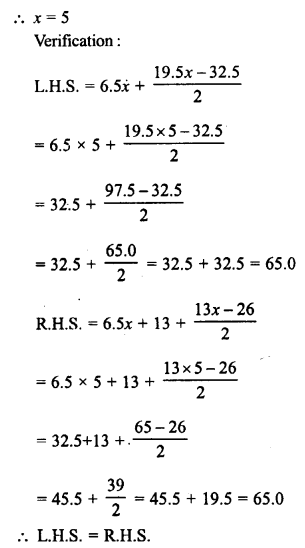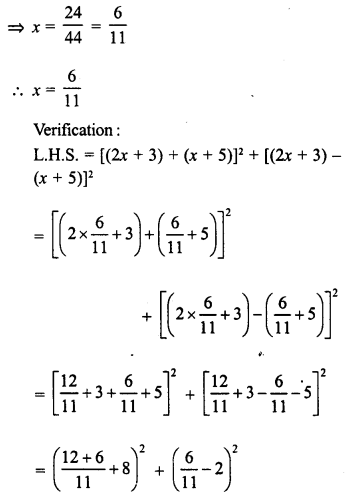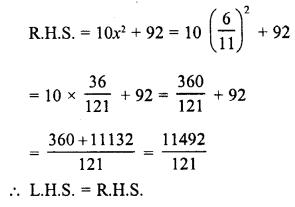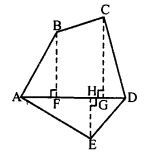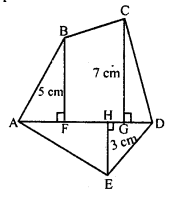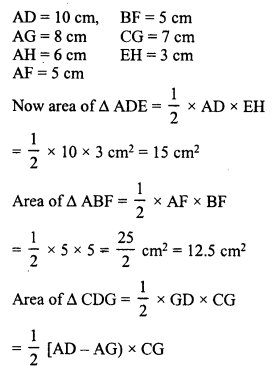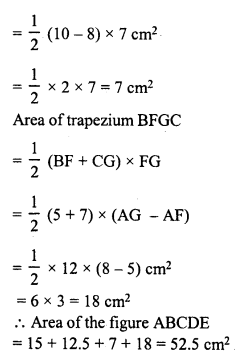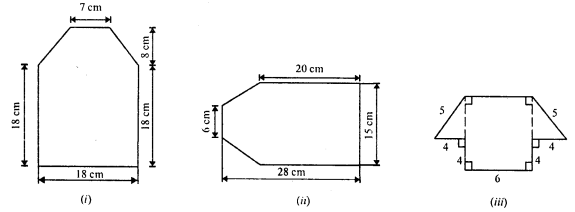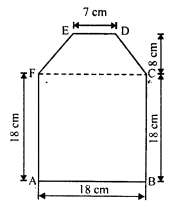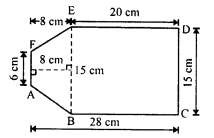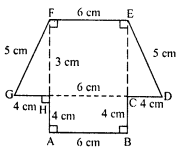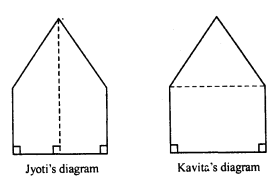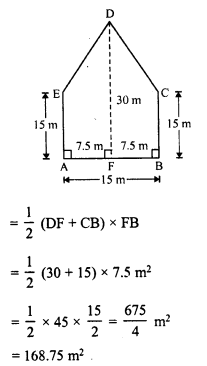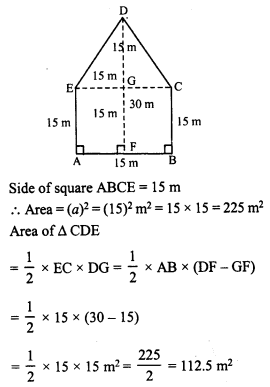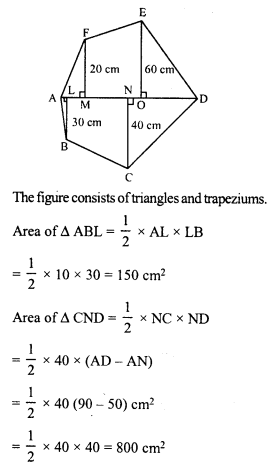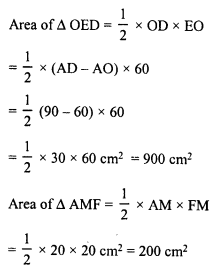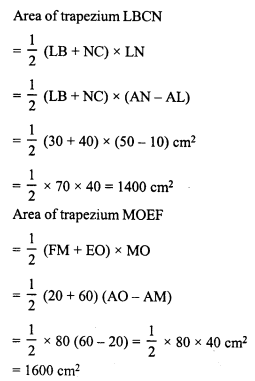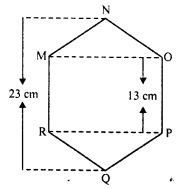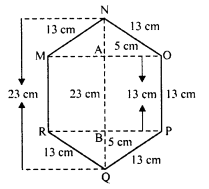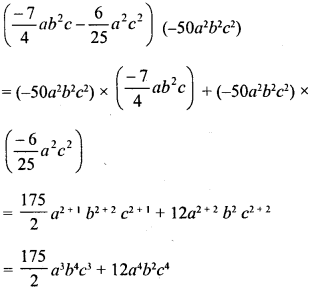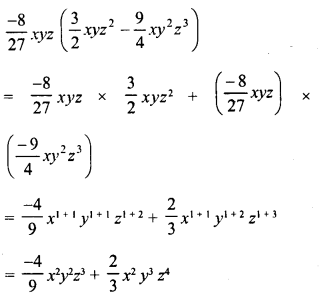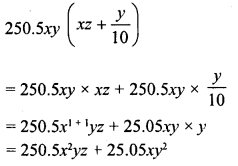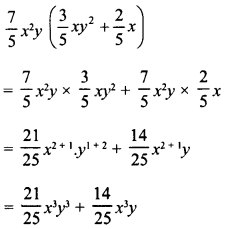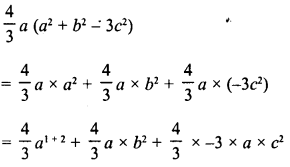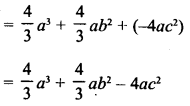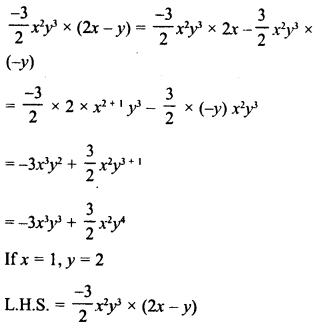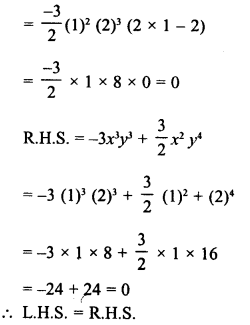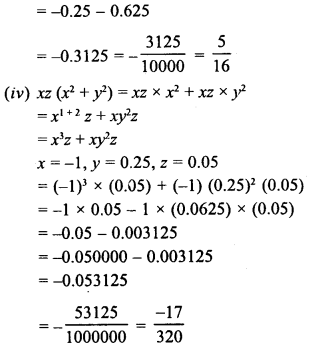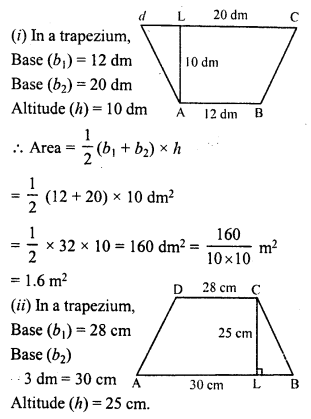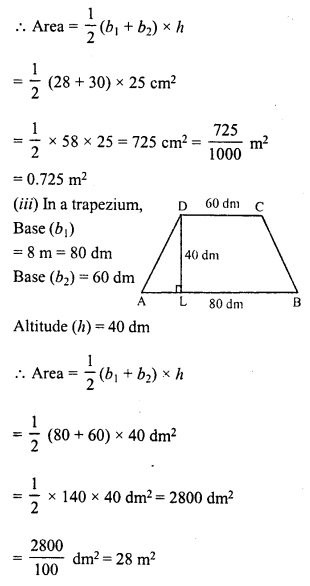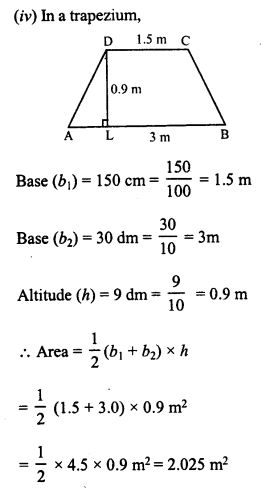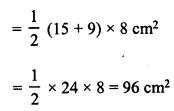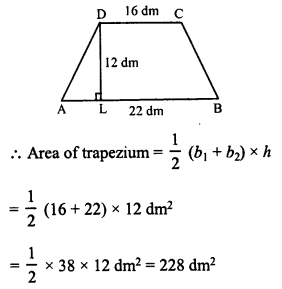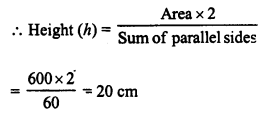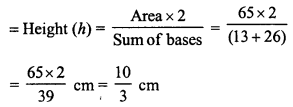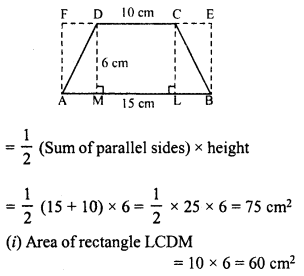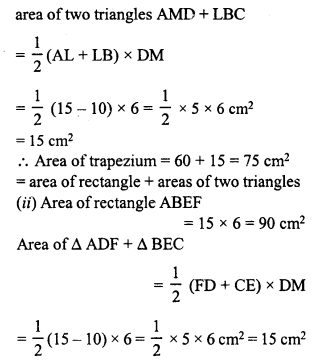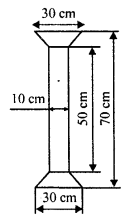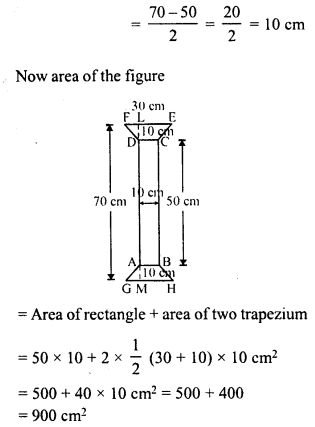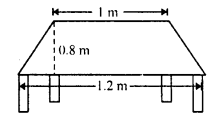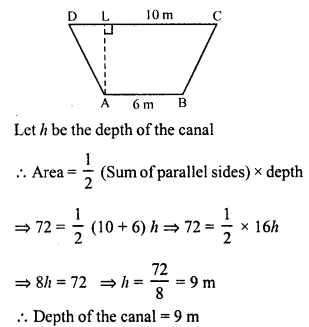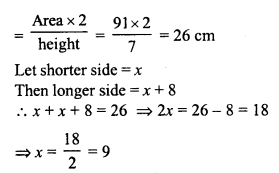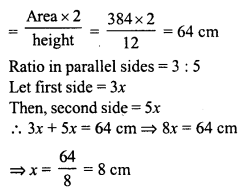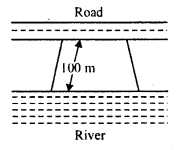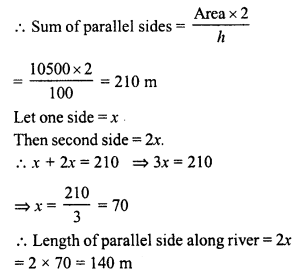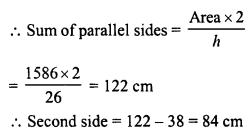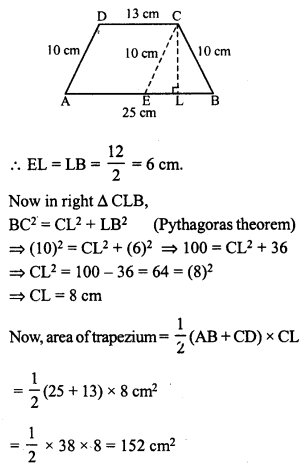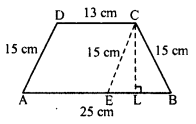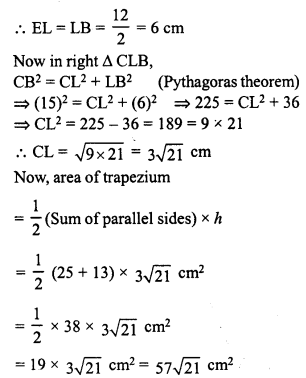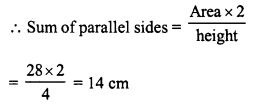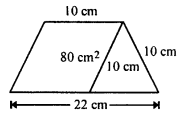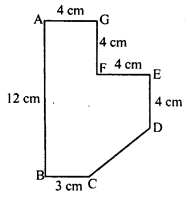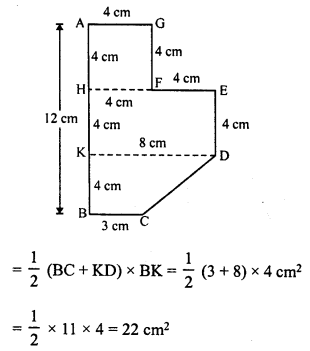RD Sharma Class 8 Solutions Chapter 7 Factorization Ex 7.3
These Solutions are part of RD Sharma Class 8 Solutions. Here we have given RD Sharma Class 8 Solutions Chapter 7 Factorizations Ex 7.3
Other Exercises
- RD Sharma Class 8 Solutions Chapter 7 Factorizations Ex 7.1
- RD Sharma Class 8 Solutions Chapter 7 Factorizations Ex 7.2
- RD Sharma Class 8 Solutions Chapter 7 Factorizations Ex 7.3
- RD Sharma Class 8 Solutions Chapter 7 Factorizations Ex 7.4
- RD Sharma Class 8 Solutions Chapter 7 Factorizations Ex 7.5
- RD Sharma Class 8 Solutions Chapter 7 Factorizations Ex 7.6
- RD Sharma Class 8 Solutions Chapter 7 Factorizations Ex 7.7
- RD Sharma Class 8 Solutions Chapter 7 Factorizations Ex 7.8
- RD Sharma Class 8 Solutions Chapter 7 Factorizations Ex 7.9
Factorize each of the following algebraic expressions.
Question 1.
6x (2x – y) + 7y (2x – y)
Solution:
6x (2x – y) + 7y (2x – y)
= (2x – y) (6x + 7y)
[∵ (2x – y) is common]
Question 2.
2r (y – x) + s (x – y)
Solution:
2r (y – x) + s (x – y)
-2r (x – y) +s (x – y)
= (x – y) (-2r + s) [(x – y) is common]
= (x-y) (s-2r)
Question 3.
7a (2x – 3) + 2b (2x – 3)
Solution:
7a (2x – 3) + 3b (2x – 3)
= (2x – 3) (7a + 3b) [(2x – 3) is common]
Question 4.
9a (6a – 5b) – 12a2 (6a – 5b)
Solution:
9a (6a – 5b) – 12a2 (6a – 5b)
HCF of 9 and 12 = 3
∴ 3a (6a – 5b) (3 – 4a)
{(6a – 5b) is common}
Question 5.
5 (x – 2y)2 + 3 (x – 2y)
Solution:
5 (x – 2y)2 + 3 (x – 2y)
= 5 (x – 2y) (x – 2y) + 3 (x – 2y)
= (x – 2y) {5 (x – 2y) + 3}
{(x – 2y) is common}
= (x – 2y) (5x – 10y + 3)
Question 6.
16 (2l – 3m)2 – 12 (3m – 2l)
Solution:
16 (2l – 3m)2 – 12 (3m-2l)
= 16 (2l – 3m) (2l – 3m) + 12 (2l – 3m)
HCF of 16, 12 = 4 4 (2l-3m) {4 (2l- 3m) + 3}
{(2l – 3m) is common}
= 4 (2l -3m) (8l- 12m+ 3)
Question 7.
3a (x – 2y) – b (x – 2y)
Solution:
3a (x – 2y) – b (x – 2y)
= (x – 2y) (3a – b)
{(x – 2y) is common}
Question 8.
a2 (x + y) + b2 (x + y) + c2 (x + y)
Solution:
a2 (x + y) + b2 (x + y) + c2 (x + 3’)
= (x + y) (a2 + b2 + c2)
{(x + y) is common}
Question 9.
(x-y)2 + (x -y)
Solution:
(x – y)2 + (x- y) = (x – y) (x – y) + (x – y)
= (x – y) (x – y + 1) {(a – y) is common}
Question 10.
6 (a + 2b) – 4 (a + 2b)2
Solution:
6 (a + 2b) – 4 (a + 2b)2
= 6 (a + 2b) – 4 (a + 2b) (a + 2b)
HCF of 6, 4 = 2
= 2 {a + 2b) {3 – 2 {a + 2b)
{2 (a + b) is common}
= 2 (a + 2b) (3-2 a- 4b)
Question 11.
a (x -y) + 2b (y – x) + c (x -y)2
Solution:
a (x -y) + 2b (y – x) + c (x -y)2
= a (x – y) – 2b (x – y) + c (x – y) {x – y)
= (x – y) {x – 2b + c (x – y)}
{(a – y) is common}
= (a – y) (a – 2b + cx – cy)
Question 12.
– 4 (a – 2y)2 + 8 (a – 2y)
Solution:
– 4 (x – 2y)2 + 8 (x – 2y)
= – 4 (x – 2y) (x – 2y) + 8 (x – 2y)
{- 4 (x – 2y) is common}
= – 4 (x – 2y) (x – 2y – 2)
= 4 (x – 2y) (2 – x + 2y)
Question 13.
x3 (a – 2b) + a2 (a – 2b)
Solution:
x3 (a – 2b) + x2 (a – 2b)
HCF of x3, x2 = x2
∴ x2 (a – 2b) (x + 1)
{x2 (x – 2b) is common}
= x2 (x – 2b) (x + 1)
Question 14.
(2x – 3y) (a + b) + (3x – 2y) (a + b)
Solution:
(2x – 3y) (a + b) + (3x – 2y) (a + b)
= (a + b) {2x – 3y + 3x – 2y}
{(x + b) is common}
= (a + b) (5x – 5y)
= 5 (a + b) (x – y)
Question 15.
4 (x + y) (3a – b) + 6 (a + y) (2b – 3a)
Solution:
4 (x + y) (3a – b) + 6 (a + y) (2b – 3a)
= 4 (x + y) (3a – b) – 6 (x + y) (3a – 2b)
HCF of 4, 6 = 2
= 2 (x + y) {2 (3a – b) – 3 (3a – 2b)}
= 2 (x + 3) {6a – 2b – 9a + 6b}
= 2 (x +y) {-3a + 4b}
= 2 (x + y) (4b – 3a)
Hope given RD Sharma Class 8 Solutions Chapter 7 Factorizations Ex 7.3 are helpful to complete your math homework.
If you have any doubts, please comment below. Learn Insta try to provide online math tutoring for you.
